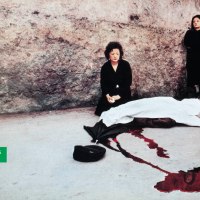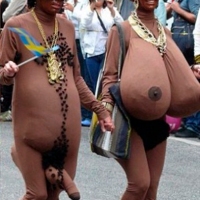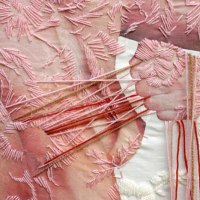Bellow Cindy Steiler‘s words:
My favorite childhood memories center on spending time with my great-grandmother, Mary Steiler. She taught me to sew, quilt and embroider, all while sharing amazing stories about her life. What she passed to me had been passed to her along a long line of women, inspiring in me a lifelong passion for creating.
Through my work I hope to capture the essence of my relationship with my grandmother while exploring and celebrating all women and girls; our relationships, our daily lives, and our traditions. I want to use my work to preserve and continue the traditions of both craft and story in a way that honors these lineages, but is decidedly modern; that is intensely personal, but accessible to all.


About the Forgotten project:
The series Forgotten is a collection of 19th Century cabinet card photographs of unidentified female subjects. Their bodies and clothing have been hand-embroidered using threads made from both natural fibers and metal. This series celebrates these forgotten women, hopefully breathing new life into their photos so they can once again be appreciated.


Excerpt from THE SUBVERSIVE STITCH: Embroidery and the Making of the Feminine, by ROZSIKA PARKER:
In Creative Embroidery, 1967, Christine Risley described embroidery as ‘making a personal statement’. The twentieth century writers have partially dispensed with the Victorian ideology of embroidery as selfless work for the comfort of others. Instead, embroidery has become a manifestation of the self. But the expression of personality is limited to personal thoughts and feelings. Nineteenth-century notions that to fulfil the feminine ideal an embroiderer had to manifest sensibility in her work has simply been updated – rephrased for a Freudian and post Freudian society.
The claim that embroidery conveys the individuality and personality of the embroiderer was repeated so insistently because writers on needlework wanted embroidery accorded the status of art. In the twentieth century the personality of the artist has become all important: creativity is considered to reside in the person of the artist, not in what she or he makes. We speak of ‘a David Hockney’, ‘a Gwen John’. Indeed, in certain art practices it is necessary for an artist only to designate an object as art for it to become so. Thus, if embroidery is to win recognition as art, it has to be stamped not with a pre-drawn pattern, but with a particular personality. But whereas the personality of a painter is expected to be eccentric and egocentric, for women embroiderers the notion of personality is still constrained by the feminine ideal. Macbeth and Swanson’s conviction that embroidery allowed for the free play of the imagination, intelligence and curiosity was subsumed into a twentieth-century feminine ideal: ‘Even the least skilled attempts at creating beauty reveal and help develop vitality, warmth and other desirable personality traits.
It is this categorisation of embroidery as the art of personal life outside male-dominated institutions and the world of work, that has given it a special place in counter-cultures and radical movements.
In the 1960s embroidery suddenly gained a new face. Embroidered suns rose over hip pockets, dragons curled round denim thighs, rainbows arched over backs. For the hippy era embroidery symbolised love, peace, colour, personal life and rejection of materialism. Everything in fact that embroidery and femininity had connoted since the nineteenth century.
[…]
(continuation)
The Women’s Liberation Movement in the 1970s inherited particular facets of the counter-culture: the rejection of establishment values, the refusal of rigid sex roles, and a recognition of the central importance of personal life – but all with a crucial difference. Feminists viewed these issues within a political perspective; it was an oppositional, not an alternative movement. The organisation of personal life with a strict division between the public and private, the domestic and professional, the emotional and intellectual, the masculine and the feminine, were analysed as the means by which one group maintained power over another.
The hippy love of embroidery as a gesture of defiance – one in the eye for a grey masculine world – lived on in the Women’s Liberation Movement. But whereas hippies had simply celebrated the emotional and individualistic associations of embroidery, feminists in their embroidery showed that the personal was the political – that personal and domestic life is as much the product of the institutions and ideologies of our society as is public life.
Some feminists took traditional embroidery motifs which connote the domestic and feminine ideal, and revealed what the pretty stitches conceal. Beryl Weaver embroidered bouquets of flowers, ladies in crinolines amongst the hollyhocks, rustic cottages. These images, originally derived from eighteenth-century
prototypes, became popular in the thirties when the rapid expansion of building in the suburbs of industrial towns had awakened the Victorian idealisation of rural life (see Chapter Seven). Today they have an added ingredient of saccharine nostalgia. Natural, rural femininity is conjured up in opposition to the brutality and artificiality of urban industrial society. Beryl Weaver subverted these images: ‘I was never encouraged to create disturbing images, so my anger comes through in the pretty pictures I was brought up with.












